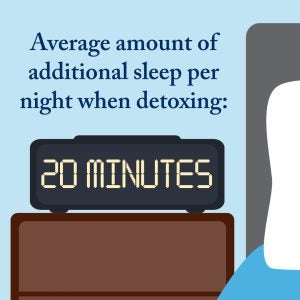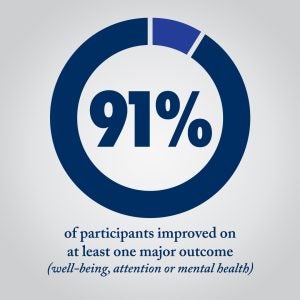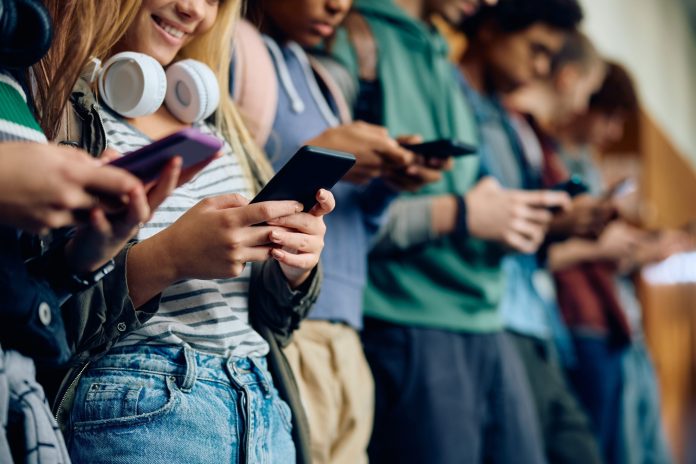Key Takeaways
- Digital detoxes to reduce smartphone usage can effectively improve mental health, sleep and other well-being metrics.
- Reducing screen time can significantly improve overall attention spans.
- Even partial digital detoxes to limit some of your screen time can still be effective.
- Charging your phone outside of your bedroom and setting timers for specific apps are effective ways to start.
If you’re anything like the average American, you probably spend over five hours per day on your phone — or more.
Today, the negative effects of excessive screen time are becoming clearer. Kostadin Kushlev, associate professor of psychology in the College of Arts & Sciences, said that too much screen time can lead to negative mental health outcomes and take time away from more important activities, such as exercise, social encounters and hobbies.

Many people are coming to terms with these negative effects and want to break free from their phone addictions with digital detoxes, or intentional measures that reduce your screen time, like blocking apps, cutting off internet access or switching to simple flip phones. Some people use software included in smartphones that helps decrease screen time, while others are buying new devices that help create physical barriers to accessing certain smartphone features.
But do any of these measures for digital detox work?
In a new study, Kushlev discovered that digital detoxes, even in small doses of reducing some of your screen time in a given day, can positively impact your life.
“If we think about what we’re trying to detox from, it’s not the calling and the texting for the most part. It is the social media. It’s the gaming. It’s all of those short dopamine bursts that we get from all these things we do on our phones,” he said.
Here’s what Kushlev found about the benefits of digital detoxes and some tips on how to unplug.
The Challenge of Unplugging
To understand whether digital detoxes work, Kushlev and his collaborators recruited nearly 500 people to commit to cutting internet access to their phones for two weeks.
Participants — who averaged about five hours of screen time before the study — installed the Freedom app, which stripped their devices of what makes smartphones smart and allowed Kushlev to track their screen time.
“What we were doing is turning their smartphones into what is now apparently a recognized term in the Merriam-Webster Dictionary, a dumb phone,” Kushlev said. “A dumb phone that basically does what a phone does, calling and things we used to consider super advanced like texting, but does not allow you access to the internet.”
Participants had to have the app active on their phones for 10 out of the 14 days of the study to meet the study’s definition of compliance.
Only about 25% of the participants succeeded. But for Kushlev, the numbers weren’t discouraging — they were a sign of hope that people could break away from their mobile devices.
“We asked people to do something really difficult. They did it for the most part. I think it’s amazing that a quarter successfully were able to not use the internet on their phones for two weeks.”
The Benefits of Digital Detoxing
The study found that digital detoxes positively affect well-being and mental health. On average, participants halved their screen time to about two-and-a-half hours.
 Participants completed before and after questionnaires that contained established indicators of well-being and mental health, such as positive emotions, negative emotions and symptoms of anxiety and depression. The study found that digital detoxes positively influence all these metrics.
Participants completed before and after questionnaires that contained established indicators of well-being and mental health, such as positive emotions, negative emotions and symptoms of anxiety and depression. The study found that digital detoxes positively influence all these metrics.
The improvements were in the same ballpark as what you see with established treatments like cognitive-behavioral therapy, and larger than the typical effect of antidepressants in clinical trials, Kushlev said.
People didn’t just report feeling a tiny bit better — on average, they felt meaningfully less anxious and stressed and more satisfied with their lives. Participants also slept 20 minutes more per night on average when they were detoxing. It’s not a total life transformation, but it’s a noticeable shift, the kind you can feel in your daily mood and functioning, Kushlev said.
Kushlev said the most surprising and perhaps important finding was how digital detoxes can significantly improve attention spans.
In the study, participants completed a five-minute computer exercise that tested their ability to sustain attention. The study revealed that after the two-week digital detox, people were able to maintain their attention for longer. This improvement in attention was comparable to reversing about 10 years of age-related decline, Kushlev said.
The finding, Kushlev said, is important because it suggests excessive smartphone usage can still negatively affect your attention span — even if you don’t have your device with you. The finding is also notable because it suggests that these negative effects are reversible even after a brief detox.
“Even though it seems insurmountable, just a little bit of digital detox — a little bit of reduction of the constant stimulation from our phones, social media, games and so forth — could actually help us reclaim our ingrained ability to sustain attention,” he said.
Moderation is Key
While only a quarter of the participants met the study’s definition of success, many more participants still experienced the same benefits. In fact, 91% of all participants improved on at least one major outcome in well-being, attention or mental health.
 “You don’t need to completely give up the internet or completely give up all the useful stuff that your phone does for you to reap most of the benefits,” Kushlev said.
“You don’t need to completely give up the internet or completely give up all the useful stuff that your phone does for you to reap most of the benefits,” Kushlev said.
The finding suggests that partial detoxes can be a more sustainable practice that is still effective, Kushlev said.
“When we talk about digital detox, we’re thinking about detoxing, really taking it all out, going back to the flip phone, not having a phone at all, blocking the internet completely, whatever the case might be,” Kushlev said. “Most of the evidence, including from our study, basically suggests that partial detoxes work pretty well.”
How to Start Your Digital Detox
Breaking bad habits can be hard. Kushlev said those looking to start partial detoxes should first observe their own phone habits.
Do you often scroll social media as soon as you wake up? Or instinctively turn to your phone throughout the workday?
“What is it for you? Where is that problematic smartphone usage that you’d like to target? Then, think about ways to reduce that,” Kushlev said.
Kushlev also said practices like charging your phone outside of the bedroom or setting timers for certain apps can be effective. At the same time, he cautioned against blocking one app only to spend the time saved on a similar app, like watching videos on YouTube instead of TikTok.
“You do need to be pretty strict with yourself. If your time limit is two hours a day per app, I don’t think that’s going to have much of an effect, but you can start with at least half the time of what you spend on, say, TikTok now,” he said. “If you think about it, do you really need to spend more than half an hour every single day on these apps? The answer is probably not.”








